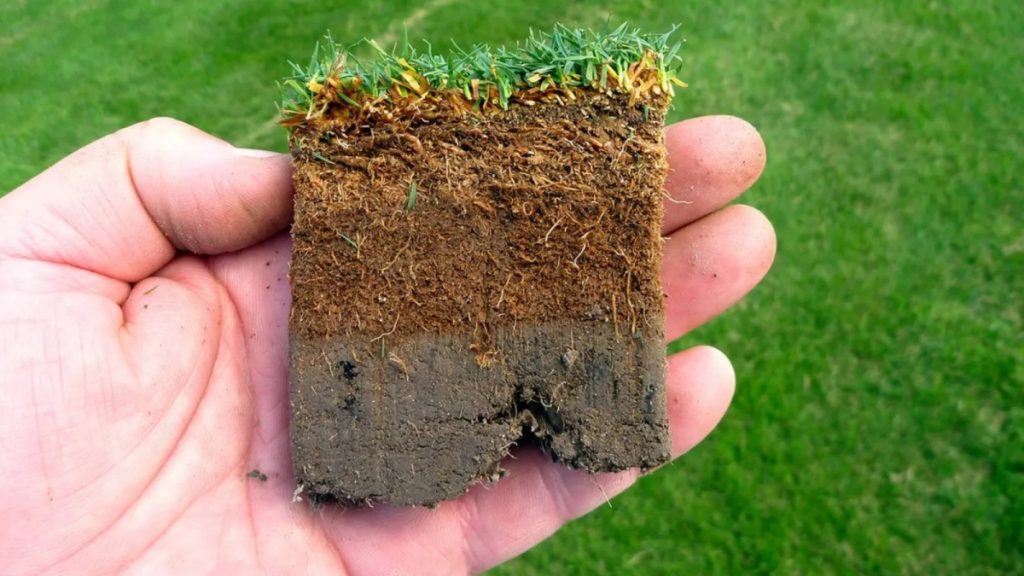Maintaining a healthy lawn requires more than just regular mowing and watering; understanding the role of thatch is crucial for achieving lush, vibrant grass. Thatch is a layer of organic debris that accumulates on the soil’s surface, composed of dead grass, roots, leaves, and other plant material. While a certain amount of thatch is normal and beneficial for a lawn, excessive buildup can lead to a range of problems, affecting the overall health and appearance of your grass.
Thatch forms when organic matter decomposes more slowly than it accumulates. Healthy lawns generally have a thin layer of thatch (about half an inch or less), which can provide insulation for the soil and help retain moisture. However, when thatch exceeds this optimal thickness, it can create barriers that impede water, air, and nutrients from reaching the soil and roots of the grass. This can result in a lawn that struggles to thrive, leading to yellowing, browning, or even dead patches.
Causes of Thatch Buildup
Several factors contribute to the accumulation of thatch in a lawn. One primary cause is the type of grass. Certain grass species, particularly those with a dense growth habit, tend to produce more thatch than others. Additionally, improper lawn care practices can exacerbate thatch buildup. Over-fertilizing, for example, encourages rapid grass growth without sufficient decomposition of organic matter, leading to thicker thatch layers.
Poor soil aeration can also contribute to thatch issues. When soil compaction occurs, it restricts the movement of air and water, making it difficult for microorganisms to break down organic matter effectively. Furthermore, inadequate watering practices—such as infrequent, shallow watering—can weaken grass roots and reduce their ability to decompose thatch.
The Importance of Managing Thatch
Managing thatch is vital for maintaining a healthy lawn. If left untreated, excessive thatch can lead to several problems, including:
- Water Infiltration Issues: Thatch can prevent water from penetrating the soil effectively, causing it to pool on the surface. This can lead to increased runoff, poor drainage, and potential erosion.
- Nutrient Deficiency: A thick thatch layer can hinder the movement of essential nutrients into the soil, depriving your grass of what it needs to grow strong and healthy.
- Pest and Disease Problems: Thatch can create an ideal environment for pests and diseases. The warm, moist conditions beneath the thatch layer can attract harmful insects and encourage fungal growth, leading to further lawn issues.
- Reduced Oxygen Levels: Compacted soil beneath excessive thatch can lead to reduced oxygen availability for grass roots, causing them to weaken and impairing overall lawn health.
How to Manage Thatch
The most effective way to manage thatch is through scarification or dethatching. Scarifying involves using a specialized tool, such as a lawn scarifier, to remove thatch and aerate the soil. This process not only helps to break up the thatch layer but also promotes the growth of beneficial microorganisms that aid in organic matter decomposition.
When considering scarification, timing is essential. The best times to scarify are typically in early spring or early fall when grass is actively growing. This allows the lawn to recover quickly from the process. During scarification, it is important to start with a shallow setting on the scarifier and gradually increase the depth for subsequent passes. This method helps to minimize damage to the existing grass while effectively removing thatch.
Additional Lawn Care Practices
Alongside scarification, other lawn care practices can help manage thatch levels. Regular aeration is one such practice, which involves creating holes in the soil to relieve compaction and promote healthy root growth. Aeration allows air, water, and nutrients to reach the soil more effectively, supporting the natural decomposition of organic matter.
Proper mowing practices are also crucial. Avoid mowing too short, as this can stress the grass and contribute to thatch buildup. Instead, maintain a height that promotes healthy growth. Additionally, using a mulching mower can help recycle grass clippings back into the lawn, providing nutrients and reducing thatch when done appropriately.
Summing Up
In summary, understanding thatch is fundamental for anyone looking to maintain a healthy lawn. Recognizing its benefits and potential problems allows homeowners to take proactive steps to manage it effectively. Tools like lawn scarifiers play a significant role in this process, helping to break down thatch and promote a healthier growing environment. For expert advice and resources, consider consulting professionals like Ron Smith, who can offer guidance tailored to your specific lawn care needs.
Understanding and managing thatch will ultimately lead to a lush, green lawn that enhances your outdoor space and provides a welcoming environment for family and friends.




